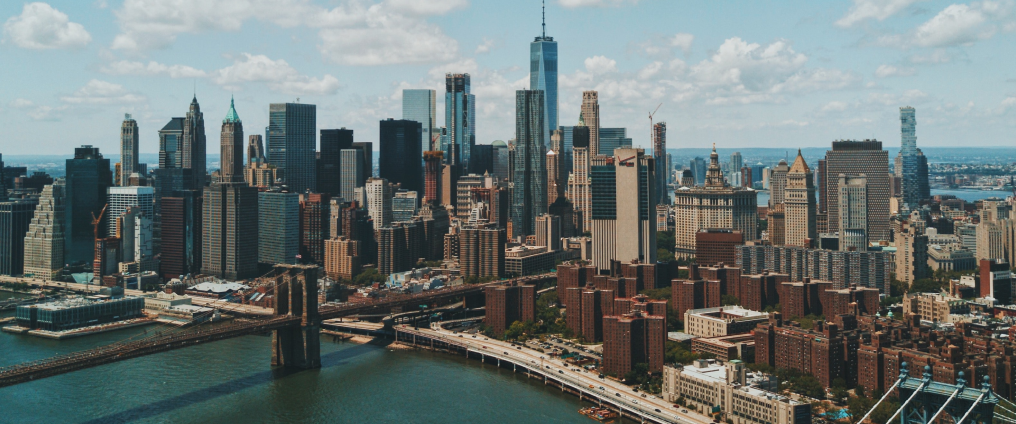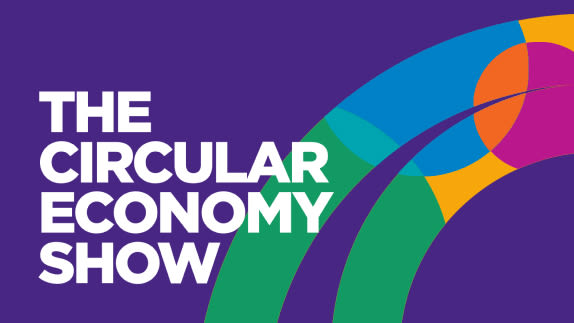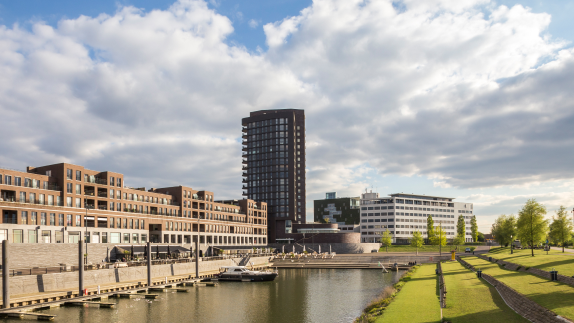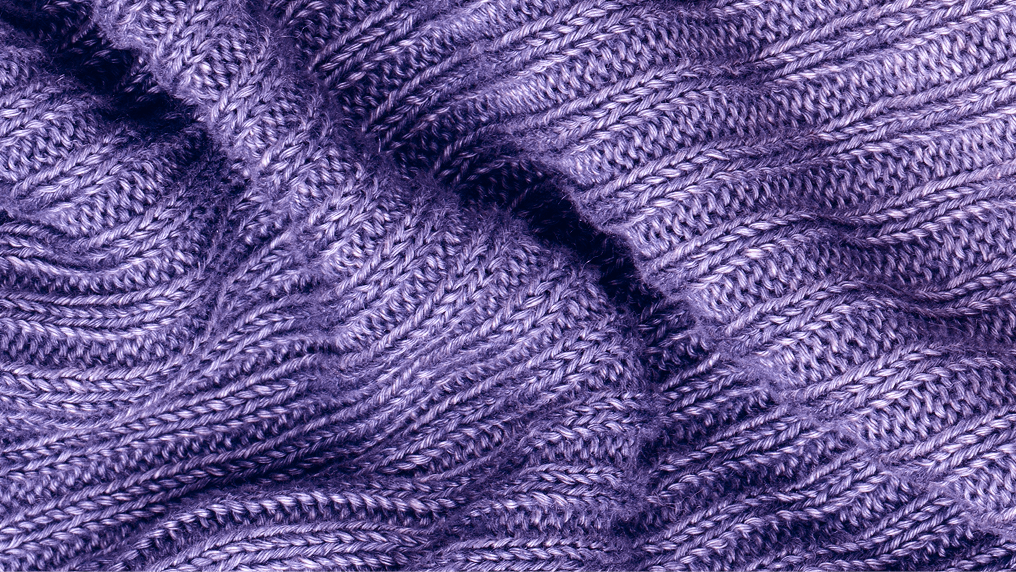Each year, New York City landfills around 100,000 tonnes of clothing — equivalent to more than 440 Statues of Liberty. The #WearNext campaign united fashion brands, collectors, recyclers, and resale companies to encourage New Yorkers to return clothes they no longer wear to collection points all over the city, keeping clothes in use and out of landfills.
Why it’s an example of the circular economy
Each year millions of tonnes of clothes are produced, worn, and thrown away. 73% of the materials used to produce clothing are landfilled or burned at the end of their life, while less than 1% of old clothing goes on to be made into new clothing. This model, which relies heavily on landfilling, is not only damaging to the environment, but it is also hugely expensive — in New York alone, the disposal of residential waste costs taxpayers USD 300 million per year. Yet despite having the infrastructure to collect and reusereuseThe repeated use of a product or component for its intended purpose without significant modification. unwanted clothing, New York City still sends a large amount of clothing and textiles to landfills.
To make it easier for New Yorkers to give their unwanted clothes a new life, in 2019 the City of New York’s Department of Sanitation (DSNY) created an interactive online map plotting the 1,100+ drop-off locations across the city. The #WearNext communications campaign followed, aiming to boost use of these drop-off points and also encourage New Yorkers to repairrepairOperation by which a faulty or broken product or component is returned back to a usable state to fulfil its intended use., resell or swap their old clothes instead of throwing them away.
The campaign connected public authorities, the fashion industry, collectors, recyclers, resellers, media, and social media influencers in New York City, and informed and empowered the public to give their unwanted clothes a new lease of life.

Core team and participants
DSNY, New York City Economic Development Corporation (NYCEDC) and the Ellen MacArthur Foundation’s Fashion programme initiated the campaign. Retail partners included ASOS, Athleta, Banana Republic, Gap, H&M, Reformation, and Zara. Other participants included textiles collectors, resellers and recyclers, Hallotex, I:CO, Lenzing, and ThredUP. The campaign partners also collaborated with media agencies Art Partner and BPCM to develop branding for the project and communicate the efforts across well-known media.
The campaign
The project aimed to both demonstrate the benefits of a new collaborative way of working by connecting local authorities, fashion brands, collectors, recyclers, and resellers, and boost collection rates by tapping into pre-existing infrastructure.
The campaign ran from March - June 2019 in New York City. It was launched at Circular City Week, an open festival promoting the circular economycircular economyA systems solution framework that tackles global challenges like climate change, biodiversity loss, waste, and pollution. It is based on three principles, driven by design: eliminate waste and pollution, circulate products and materials (at their highest value), and regenerate nature. in New York, which attracted 2,185 participants.
The #WearNext social media campaign raised awareness of the huge quantities of clothing being sent to landfill and encouraged designers and brands to redesign clothes for enhanced durabilitydurabilityThe ability of a product, component or material to remain functional and relevant when used as intended. and recyclabilityrecyclabilityThe ease with which a material can be recycled in practice and at scale.. It promoted solutions including the map of clothing drop-off locations, local clothes swap events, and inspiring examples of how clothes can be reused. Social media users were encouraged to share their stories using the hashtag #WearNext.
Art Partner, a leading artist management agency, was commissioned to design campaign posters which were displayed at bus shelters and HSBC cash machines around the city, and on communications network LinkNYC.
Fashion models including Louise Follain and Marina Testino, actor Kelly Rutherford, and celebrated fashion photographer Harley Weir were among those supporting the campaign. The campaign was amplified by project partners and brands including Athleta, H&M, and I:CO at Circular City Week and the NYCxDesign and the NYCxReuse activation events. In addition, Athleta, Banana Republic, and Gap installed textile collection bins in their stores provided by DSNY through the refashionNYC programme. Several other retailers including Zara ran their own independent garment collecting initiatives in the same time period.

Visual assets for the #WearNext campaign
Finance
The City of New York and the Ellen MacArthur Foundation contributed financially to the project. DSNY and NYCEDC allocated weekly staff resources in support while the Foundation’s Fashion team supported on project management and communications. Each brand participant also contributed 1-3 hours per week. The project relied largely on contributions of time and in-kind services, as well as collaboration between local city actors such as Global Fashion Exchange, NYC x Design, donateNYC, and Stop ‘N’ Swap.
Outcomes
By the end of the campaign, views of DSNY’s interactive map had increased by almost 40 times (from around 3,000 to over 118,000 views). The availability of drop-off points also grew as retail partners’ own clothing collection initiatives were also added to the map.
DSNY collected data on clothing donation volumes from seven different locations. Compared to the same time period in the previous year, 583 tonnes more clothing was collected, an average increase of 15%, with some recording up to 48% increase. Gap, Athleta, and Banana Republic cumulatively collected two tonnes of clothing over the two-month campaign.
The hashtag #WearNext took on a clear identity beyond the campaign and is continually used by the public to share stories and exchange ideas around keeping clothes in use.
Reflections
Consolidation and increased use of existing infrastructure.
Creating maps based on publicly available information can be a simple way to increase awareness and directly engage with stakeholders. For DSNY, creating the #WearNext map was relatively straightforward, both because of the presence of a law requiring all publicly accessible bins to be registered with DSNY, and because of the city’s experience running the DonateNYC food redistribution programme. Similar mapping initiatives exist in other cities, such as Amsterdam’s map of textile drop-off points and Gothenburg’s smart-map, developed with local residents to show where residents can hire, borrow, share, and swap items.
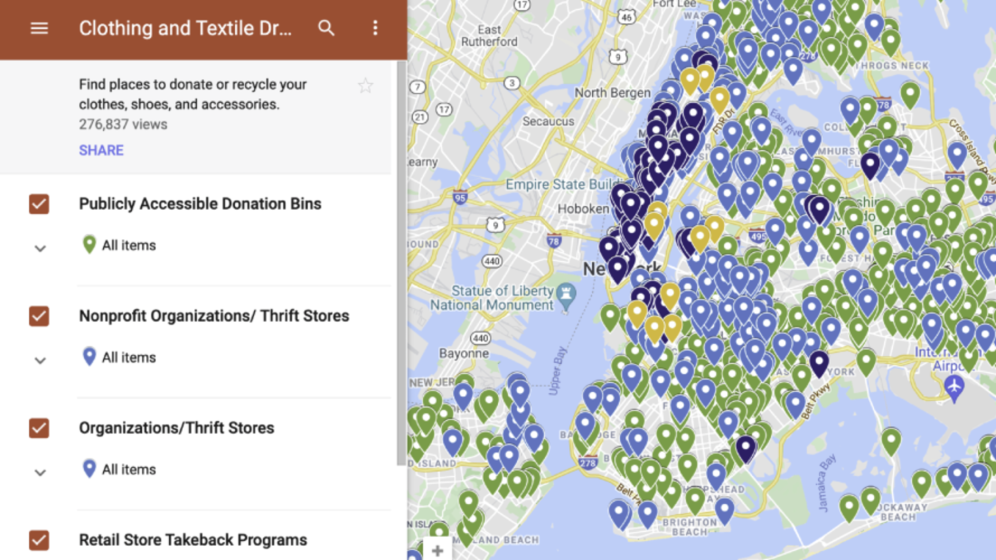
Interactive map of clothing drop-off points in New York
Creating a culture of collaboration.
The retail partners saw the value in joining forces with local authorities for the #WearNext campaign: as an opportunity to make new contacts, gain an understanding of the textile recycling landscape in New York, and facilitate future collaborations. The campaign paved the way for DSNY to collaborate with several brands through its refashionNYC clothing donation and recycling service.
Increasing circular economy interest in the fashion industry.
Having several fashion brands align on this project demonstrated growing willingness within the apparel industry to drive change. #WearNext was an opportunity for fashion brands to incorporate circular economy in their marketing and public relations strategies, as well as to adapt their messaging and engagement based on customer interest in take-back initiatives.
Creating a blueprint for similar campaigns in other cities.
After #WearNext, several cities reached out to the Foundation’s Fashion team expressing interest in running a similar campaign. Based on the coordination and preparation needed for #WearNext, campaign partners recommend that for anyone willing to run a similar campaign, at least six months should be allowed for the campaign planning.
Download the case study, originally published in March 2019:

